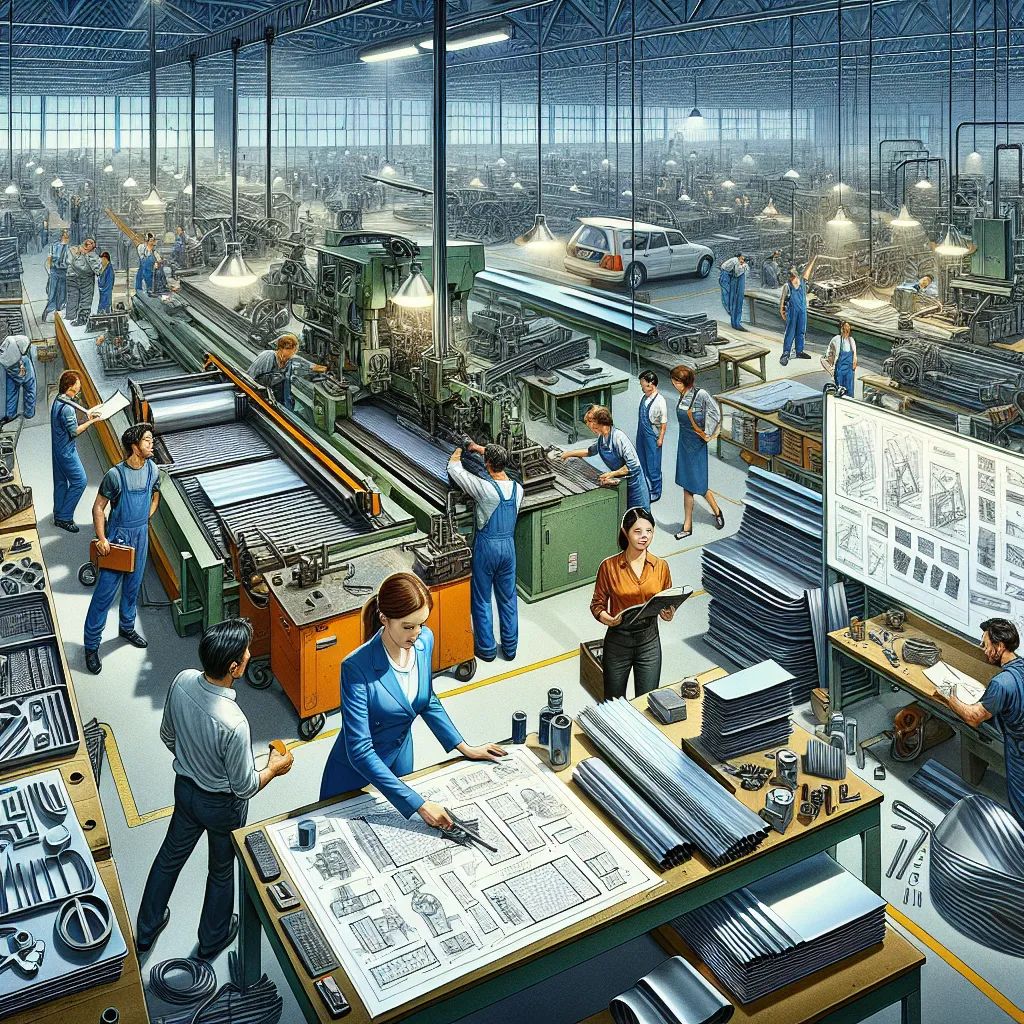Exploring the Versatility and Applications of Sheet Metal
Exploring the Versatility and Applications of Sheet Metal
Introduction
Sheet metal is a widely used material in various industries due to its versatility, durability, and ease of manipulation. It refers to metal formed into thin, flat pieces, typically available in various thicknesses. This article delves into the world of sheet metal, exploring its characteristics, manufacturing processes, and diverse applications across different sectors.
Characteristics of Sheet Metal
Sheet metal possesses several key characteristics that make it an ideal choice for many applications:
-
Malleability:
Sheet metal can be easily bent, stretched, and formed into complex shapes without losing its structural integrity. -
Strength:
Despite its thinness, sheet metal retains considerable strength, making it suitable for both structural and decorative purposes. -
Durability:
Sheet metal exhibits excellent resistance to corrosion, weathering, and impact, ensuring its longevity. -
Conductivity:
Depending on the type of metal used, sheet metal can possess high electrical and thermal conductivity, making it valuable in electrical and heating applications. -
Availability:
Sheet metal is widely available in various metals such as steel, aluminum, copper, and brass, providing a wide range of options to suit specific needs.
Manufacturing Processes
Sheet metal can be fabricated through different manufacturing processes, including:
-
Shearing:
The process of cutting large sheets of metal into smaller, more manageable sizes using specialized machinery. -
Bending:
Utilizing press brakes or other tools to bend sheet metal into desired shapes, angles, or curves. -
Roll forming:
Passing sheet metal through a series of rollers to shape it into consistent profiles or cross-sections. -
Stamping:
Using a die and a press to cut and shape sheet metal into complex forms and patterns. -
Welding:
Joining multiple sheets of metal together using heat and pressure to create larger structures. -
Finishing:
Applying various surface treatments such as painting, powder coating, or plating to enhance the appearance and protect the sheet metal.
Applications of Sheet Metal
The versatility of sheet metal enables its application in a wide range of industries, including:
1. Construction and Architecture
Sheet metal plays a crucial role in construction and architecture due to its strength, durability, and aesthetic appeal. It is utilized in roofing, siding, gutters, and decorative elements. Additionally, sheet metal is often employed in HVAC (Heating, Ventilation, and Air Conditioning) systems, air ducts, and insulation due to its excellent thermal conductivity properties.
2. Automotive Industry
In the automotive industry, sheet metal is extensively used for body panels, chassis components, engine parts, and exhaust systems. Its light weight, corrosion resistance, and ability to withstand high temperatures make it an ideal material for automotive applications.
3. Aerospace and Aviation
Sheet metal is widely employed in the aerospace and aviation sectors for manufacturing aircraft components, including fuselages, wings, tail sections, and engine parts. Its high strength-to-weight ratio, heat resistance, and ability to withstand extreme conditions make it indispensable in this industry.
4. Electrical and Electronics
Sheet metal is essential in the electrical and electronics industry for manufacturing enclosures, cabinets, and chassis for various electronic devices and equipment. Its conductivity properties enable efficient heat dissipation and electromagnetic shielding, ensuring the safety and reliability of electronic systems.
5. Industrial Manufacturing
In industrial manufacturing, sheet metal is utilized in a wide range of applications, including machinery, equipment, storage systems, and transportation containers. Its versatility and ease of customization allow for the creation of tailored solutions according to specific requirements.

6. Art and Design
Sheet metal is a popular choice among artists and designers due to its malleability and ability to create unique, three-dimensional forms. It is often used to create sculptures, furniture, decorative objects, and architectural installations.
Conclusion
Sheet metal is a versatile material that serves a multitude of purposes across various industries. Its unique characteristics, wide availability, and adaptability make it an indispensable choice for countless applications. Whether in construction, automotive, aerospace, electrical, industrial, or artistic sectors, sheet metal continues to provide solutions that meet the demands of modern engineering and design.
